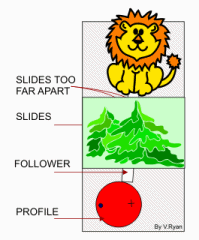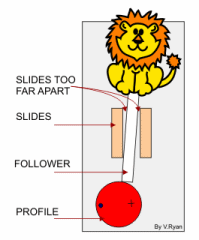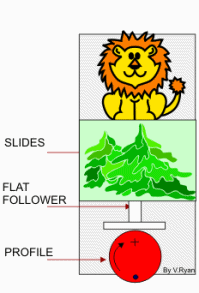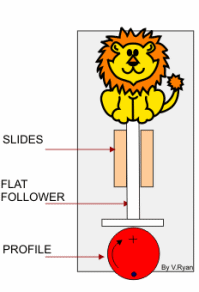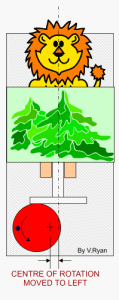| CLICK HERE FOR INDEX PAGE | |||
| CAM TOY MECHANISMS - COMMON FAULTS | |||
| V. Ryan © 2006 | |||
|
CAM mechanisms work well if they are made accurately. However, any inaccuracy in making the device can lead to the mechanism ‘jamming’ when the profile rotates. Also, inaccurate making can lead to the movement of the follower being less than smooth when the profile rotates. |
|||
|
|
The diagrams show a typical CAM, mechanical toy.
The follower has jammed as the profile rotates in a clockwise
direction. |
|
|
|
|
The two faults can be corrected quite easily by
altering; |
|
|
|
|
Another way of ensuring the smooth movement of the CAM mechanism is to ‘offset’ the position of the profile. The profile can be moved to the right or left. If moved to the left, the profile will rotate smoothly in an anticlockwise direction. Alternatively, if moved to the right the profile will rotate smoothly in a clockwise direction. |
||
|
QUESTIONS: |
|||
| CLICK HERE FOR MECHANISMS INDEX PAGE | |||
|
|
|||
|
|||
